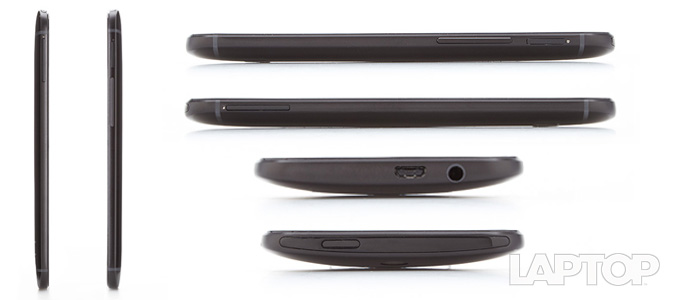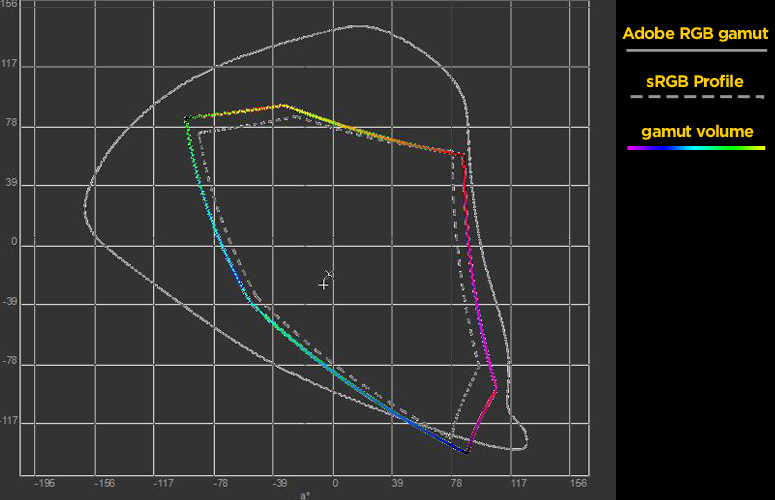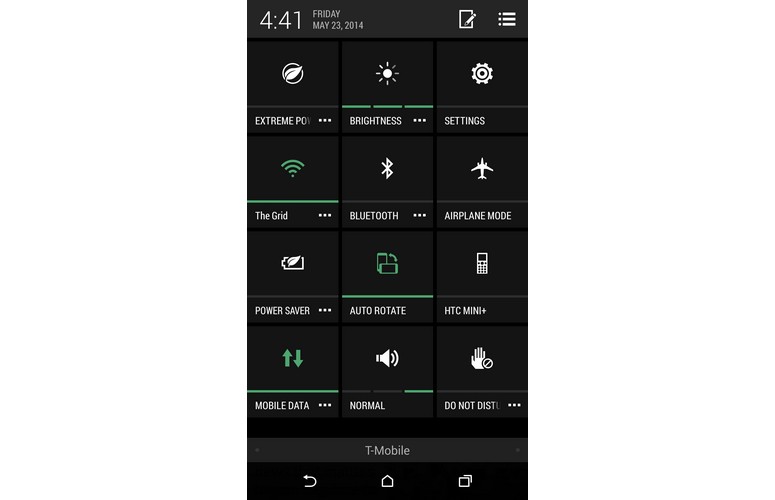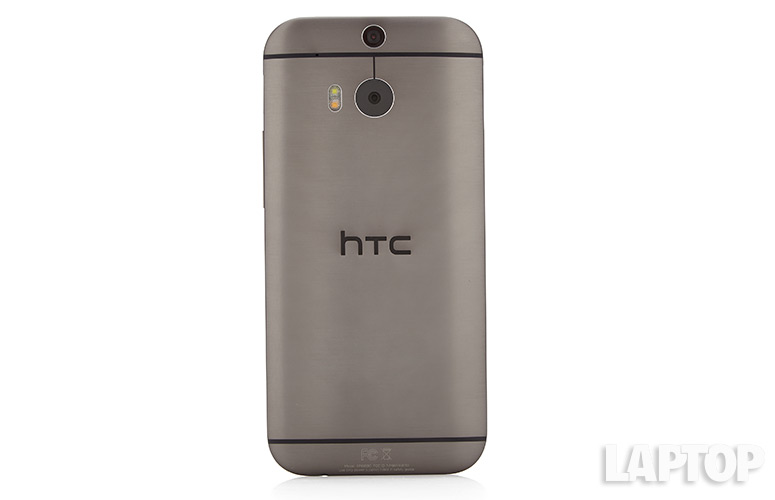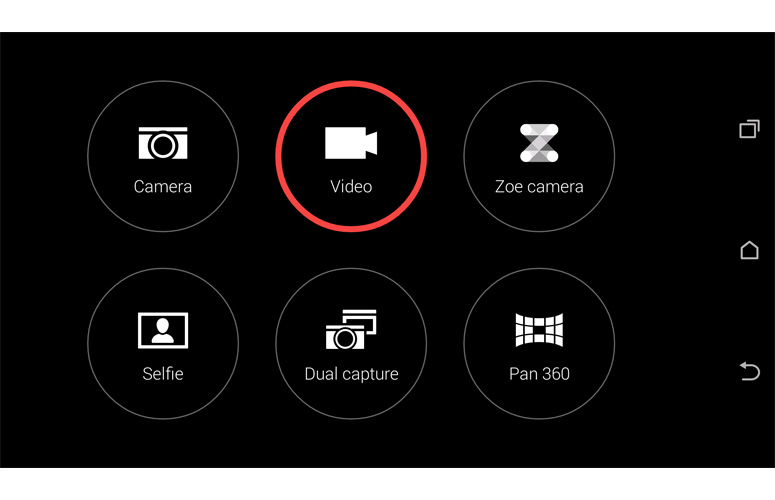Laptop Mag Verdict
The HTC One M8 for T-Mobile packs a gorgeous display, slick Duo Camera and all-day battery life into today's sexiest looking smartphone.
Pros
- +
Gorgeous design
- +
Beautiful display
- +
Booming speakers
- +
All-day battery life
- +
Cool Duo Camera
Cons
- -
Somewhat heavy
Why you can trust Laptop Mag
HTC's original One M7 was one of our favorite smartphones of 2013, but the company hasn't rested on its laurels. Packing a larger 5-inch display, more powerful quad-core processor, sleeker all-aluminum chassis and dual rear cameras, the new HTC One M8 is everything we loved about its predecessor and more. Add in its more than 10 hours of battery life on T-Mobile's network--along with $0 down and 24 monthly payments of $26.50 ($636 total)--and you've got a smartphone that is easily one of the best handsets in the world.
Editor's Note: Portions of this review were taken from our original HTC One M8 review.
Design
The HTC One M7 was one of the best-looking Android phones ever made, and the One M8 looks even sleeker. Like its predecessor, the One M8 has an aluminum back, though this time around, the chassis is 90 percent metal instead of 70 percent. The rear panel now wraps completely around the handset, from glass-to-glass. The change makes the new One feel more rounded and comfortable to hold, but a bit more slippery.
Our unit had a Gunmetal Gray paint job with a brushed aluminum finish that contrasted nicely with the matte black HTC logo on the phone's rear panel. If that isn't your color, you can opt for Amber Gold or Glacial Silver. Up front, the handset's BoomSound speakers have a matte Gunmetal Gray finish that makes the handset's polished chamfered edging pop. And since the One uses on-screen Android buttons rather than the soft-touch buttons found on the M7, the handset's face looks significantly cleaner.
The volume rocker, located on the One M8's right edge, is more pronounced than the previous generation's, making it easier to press. HTC also moved the headphone jack to the bottom edge next to the micro USB port, so the top now houses just the power button and IR blaster. We like that the power button is now positioned farther to the right, but having it by our right thumb (as on the Galaxy S5) would be easier. Around back is the handset's dual-lens Duo Camera (more on that later).
To accommodate its 5-inch display (which is 0.3 inches larger than last year's model), the One's chassis grew taller and a hair wider than its predecessor, 5.8 x 2.8 x 0.37 inches to the original's 5.4 x 2.7 x 0.36 inches. The additional volume means the One M8 is also heavier than last year's version, at 5.6 ounces versus 5 ounces. Samsung's 5.1-inch Galaxy S5, which comes wrapped in plastic, measures 5.6 x 2.9 x 0.32 inches and weighs just 5.1 ounces.
Sign up to receive The Snapshot, a free special dispatch from Laptop Mag, in your inbox.
Display
Click to EnlargeThe HTC One's 5-inch 1920 x 1080-pixel Super LCD 3 display produced stunning visuals in our tests. Elements we usually take for granted, such as the home screen wallpaper and app icons, looked surprisingly realistic. The vibrant blues and reds of Spider-Man's suit in the trailer for "The Amazing Spider-Man 2" seemed to leap off the screen.
In general, we found colors to be more vibrant on the One M8's display than on its predecessor. Whites also looked truer on the One M8 than on the One M7. The color quality on the iPhone 5s was a bit more neutral than the One M8, which skewed toward oversaturating reds and blues.
Click to EnlargeThe One M8 displayed 112.5 percent of the sRGB gamut on our color test, meaning it is capable of showing more colors than the standard. By comparison, the iPhone 5s can display 98.4 of the sRGB gamut. Color reproduction on the One M8 was fairly accurate with a Delta-E score of 5.2 (lower numbers are better). Still, Samsung Galaxy S5 was slightly more accurate at 0.9, while the iPhone 5s measured 0.05. A score of 0 is perfect.
At 413 nits, the HTC One M8's display is brighter than the average smartphone, which reached just 340 nits. Samsung's Galaxy S5 reached just 378 nits, while the iPhone 5s hit an impressive 430 nits.
Audio
Click to EnlargeThere's no contest here. The new HTC One's front-facing BoomSound speakers are the best- sounding smartphone speakers in the world. Kendrick Lamar's bass-heavy "Compton" pounded loudly with each hit, and guitar riffs in Killswitch Engage's "Rose of Sharon" shredded the din of our quiet conference room.
HTC says the new One's speakers' are 20 percent louder than last year's model, which translates into more dynamic-sounding audio. This improvement comes despite the fact that the One M8 doesn't use the same Beats Audio engine as its predecessor. And when placed side by side, bass hits on Lamar's "Compton" were far deeper on the new One, while treble was louder without sounding too tinny.
At 86 decibels, the One M8's speakers are measurably louder than the original One M7's, which reached just 81 dB. The Samsung Galaxy S5's tinny speakers pushed out just 20 dB. The LG G2 pumped out just 80 dB of sound.
Interface
Click to EnlargeThe One M8 comes loaded with HTC's Sense 6.0 UI, which rides on top of Google's Android 4.4 KitKat. While we like the interface's clean lines and crisp fonts, it's mostly more of the same. The biggest difference between Sense 6.0 and Sense 5.0 is HTC's new color coding motif, which gives certain proprietary apps specific colors based on their function. Entertainment apps such as Sense TV and Gallery get an orange banner, while productivity apps such as Email and Tasks are Blue.
You can also customize the HTC One's theme by selecting one of four available home screen wallpaper themes. The themes also change BlinkFeed's main color scheme, as well as the color for the One's quick settings menu and text.
MORE: Smartphone Buying Guide: What You Need to Know Before You Buy
Speaking of BlinkFeed, HTC has switched the app out of the default home screen slot in favor of a standard Android screen. The app is now accessed by swiping from left to right from the main home screen. If you prefer having BlinkFeed as your home screen, however, you can assign it as such.
The One's default home screen features a weather and time widget up top, below which is a Google Now search bar, T-Mobile TV widget, Google apps folders, and shortcut for the Play Store.
At the bottom are omnipresent shortcuts to the Phone, Messages, Apps Drawer, Android Browser and Camera apps. The same apps sit on the One's lock screen. Unfortunately, you can't customize these lock screen apps. You can, however, add various widgets to your lock screen, including Google Now updates, weather and a clock.
Click to EnlargeThe One M8's notification menu is significantly improved over the M7's. You now get access to 23 quick settings rather than the eight offered with the M7. What's more, you can edit which of these appear on the notifications screen, including Data Roaming, Mobile Hotspot, Brightness, NFC, Media Output and others. Samsung's Galaxy S5 offers a similar setup, though screen brightness is easier to adjust on the S5, thanks to its slide selector.
BlinkFeed
Click to EnlargeMore than a Flipboard news reader knockoff, the new version of BlinkFeed brings additional functionality. A kind of news reader that lets you add specific topics or websites and updates as new stories hit the Web, BlinkFeed is now easier to customize than its previous iteration. For instance, thanks to integration with Foursquare, BlinkFeed can now provide restaurant suggestions in your area based on the time of day. Integration with Fitbit will let the HTC One pull in your workout data. Unfortunately, you'll have to wait for this feature, as HTC told us it won't be ready at launch. The app still also provides updates from your social media accounts, including Facebook, Twitter and LinkedIn.
Motion Launch
Similar to Motorola's Moto X, Motion Launch detects when you pick up the phone and, like LG's KnockOn, lets you double-tap the screen to unlock.
However, the new One M8 goes further than other smartphones. You can swipe in from the right to go to the home screen and swipe in from the left to unlock to BlinkFeed. Swiping up from the bottom takes you directly to the most recently used app. You can also swipe down from the top to unlock to voice calling, or turn the phone to portrait mode and press the volume up button to unlock to the Camera app.
Note that, if you have security enabled, you'll have to unlock the One before performing one of the above actions.
Sense TV
Click to EnlargeAn IR blaster on the top edge of the One M8 works in conjunction with the Sense TV app to let you control your TV, cable box and home theater system. From here you can change the channel, adjust the volume, select video output settings and pretty much anything else you can do with your standard remote.
HTC's Sense TV uses the Peel service to tap into your cable or satellite provider's feed to provide you with a channel guide complete with what's on and what's coming on next. You can also watch favorite shows and channels and share them via social media so everyone can admonish you for watching "The Real Housewives of Beverly Hills."
Performance
Click to EnlargeHTC packs the One M8 with Qualcomm's powerful quad-core 2.3-GHz Snapdragon 801 processor, 2GB of RAM and 32GB of onboard storage. And unlike the original One, the new One also includes a 64GB microSD card slot, so you'll have plenty of space for all your favorite movies, music and photos.
During our time with the One, we were impressed by its powerful performance. Resource- intensive games such as "N.O.V.A. 3" were buttery smooth and looked better than we've seen on most other smartphones. Apps opened and closed in the blink of an eye, and the camera fired off photos instantaneously.
On our real-world VidTrim test, the One M8 took a blistering 5 minutes and 2 seconds to transcode a 204MB, 1080p video to 480p. That's nearly three minutes faster than the average smartphone (7:51), while the original HTC One took 7:33. The Galaxy S5, which has the same CPU, finished the test in a faster 4:42, while the Snapdragon 800-powered Samsung Galaxy Note 3 took 5:15.
Not surprisingly, the HTC One offered some of the best scores we've seen on synthetic benchmark tests. On the Geekbench 3 test, for example, the handset scored 2,431, far better than the smartphone category average of 1,837. The Galaxy S5 scored a slightly higher 2,897, while the HTC One M7 scored 1,972. Apple's iPhone 5s with its 64-bit A7 processor, however, nudged past the One M8, scoring 2,556, as did Samsung's Galaxy Note 3 and its Snapdragon 800 CPU and 3GB of RAM.
On the Quadrant benchmark, which tests a phone's overall performance, the HTC One scored 24,035, smashing the category average of 11,792. The original HTC One scored 12,150, while the Galaxy Note 3 scored 22,279. The Galaxy S5, for its part, scored 22,692.
The HTC One M8 was an equally strong performer on the 3DMark Ice Storm Unlimited test, muscling its way to a score of 20,658. The iPhone 5s scored 13,795, while the average smartphone scores and original HTC One scored 11,716 and 10,325, respectively. The Galaxy Note 3 scored 18.321 and Galaxy S5 an 18,547.
Camera & Camcorder
Not only can the Duo Camera on the back of the HTC One capture 3D-like images, but now you can alter the focus of your photo after you've taken it.
The larger of the two cameras, which uses the same 4-MP Ultrapixel sensor as the One M7, serves as the primary shooter. During our tests, the One M8's camera captured quality low-light photos both with and without the flash, falling just behind the iPhone 5s. The Galaxy S5's low-light images were blurry and lacked detail, while the One M7's shots had a blue tint surrounding our subject.
In daylight, the HTC One captured beautiful images. A shot of a red flower looked more natural when taken with the HTC One and iPhone than it did when taken with the S4, which made colors look too hot. That said, a shot of a blue sky looked more even when taken with the iPhone than it did with the One M8. Because of its relatively low resolution relative to its competitors, we couldn't zoom in on photos taken with the One as far as we could with the iPhone 5s or Galaxy S5.
A 1080p video shot with the One looked gorgeous, capturing the action in a local dog park. Colors looked clear and details were crisp. However, we would have liked HTC to add in optical image stabilization, as videos were relatively jumpy.
[sc:video id="9seHE1cTrTPUixhLOixWzXdCeR4vrPv-" width="575" height="398"]
Click to EnlargeFor all of you selfie fans out there, HTC equipped the One M8 with a 5-megapixel front shooter. That's far better than the 2.1-MP camera on the One M7, and the difference in quality shows. Images shot with One M8 looked sharp and colorful, compared with the slightly grainy photos taken with the M7. Even the iPhone 5s' front camera couldn't hold a candle to the One M8's.
HTC also brought back its Zoe feature, which lets you take a photo and a short video in one shot. Now, however, you can shoot videos longer than 3 seconds by holding down the record button for 3 seconds and releasing it. You can also upload Zoes to social media sites, as well as let your friends collaborate with you on your creations. The Zoe feature also gets more functionality, including Gif Creator, Sequence Shot and Object Removal. We still think the Zoe name is confusing, but we're glad to see that HTC has beefed up the feature.
Duo Camera
Click to EnlargeThe new One's Duo Camera works in tandem with the phone's Ultrapixel shooter to capture depth in your photos. By doing so, the camera adds a host of fun editing options, including Dimension Plus, UFocus and Foregrounder.
Dimension Plus lets you add a touch of 3D to your images. To activate it, take a photo, select the Effects tool and choose Dimension Plus. The new result is an image that reacts to how you move the phone, similar to the iPhone's Parallax feature. While Dimension Plus worked well on close-ups, we found its effects were most noticeable when taking photos of landscapes. Unfortunately, you can't share Dimension Plus photos, as the effect only works on the One M8.
UFocus lets users change the focus of photos to the background or foreground. When you focus on a subject in the foreground, UFocus will automatically blur the background. Focus on the background and the foreground will blur. The feature is fun to use, but we saw uneven results. In one image, for example, we tapped our subject's face, only to have the top of his head blur with the background.
Instagram's tool works better, because it lets you manually choose an area to focus on and how much of the photo it blurs. The One M8 lets you select the portion to focus on, but not how much of the photo to blur. The Galaxy S5's Selective Focus feature offers a similar functionality, though instead of being able to choose a specific part of the screen to focus on or blur, it automatically adjusts the foreground or the background.
The Foregrounder app lets you add a filter to the background of photos, while leaving the foreground untouched. Filters include Sketch, Zoom Bur, Cartoon and Colorize. If you're going to use one of these filters, the foreground's focus has to be fairly exact.
In the future, HTC says it will release a Copy and Paste camera mode that will let you copy a subject from one photo and paste it into another shot.
Apps
Click to EnlargeHTC doesn't clobber you over the head with pre-loaded apps like some other smartphone makers. Beyond BlinkFeed and Sense TV, the only other apps to speak of are the Zoodles Kids Mode, Parental Dashboard and ISIS Mobile Wallet.
Zoodles, which was available on the previous HTC One, offers games and activities that are great for young children. What's more, the app has a parental lock that ensures kids can't exit Zoodles without their parent's permission. The Zoodles' Parental Dashboard app provides parents with a means to control what their kids can and can't do while using Zoodles, including the types of apps your child can use, the websites they can visit and the games they can play.
ISIS Mobile Wallet lets you use the One to pay for items at ISIS-enabled point-of-sale terminals. You can find available ISIS terminals near you by visiting ISIS' website and plugging in your ZIP code. Before you start making mobile payments, though, you'll have to ensure you have a secure SIM card. If you don't, you can talk to your carrier about getting one. Unfortunately, the service is supported only by AT&T, T-Mobile and Verizon.
T-Mobile doesn't load the One M8 with many apps, either. The only apps you get are T-Mobile Mobile Hotspot, My Account, Name ID, T-Mobile TV and Visual Voicemail.
Battery Life
The HTC One M8 houses a 2,600 mAh battery, which is larger than the 2,300 mAh pack in the older One. As a result, the new One lasted a marathon 10 hours and 50 minutes on the Laptop Mag Battery Test, which involves continuous Web surfing over T-Mobile's 4G LTE network with the display brightness set to 150 nits. That's just 7 minutes shy of the Samsung Galaxy S5's time of 10:57. Both times, however, are nearly four hours longer than the category average of 7:00.
MORE: 10 Smartphones with the Longest Battery Life
On our earlier version of the Battery Test (with the brightness at 40 percent), the older One lasted only 5:44. The iPhone 5s died out in 5:46. However, the LG G2 lasted a fairly impressive 9:14.
If you really want to extend the One M8's battery life, you can enable Extreme Power Saving Mode, which cuts CPU usage, reduces screen brightness, turns off vibration and the pedometer and disables mobile data when the screen in off.
4G LTE Performance
Click to EnlargeT-Mobile's 4G LTE network reaches just 230 cities, the least of the Big Four carriers, but when you can connect, you'll get some impressive speeds. When we tested the One M8 using the Speedtest.net app near our office in New York's Flatiron District, we saw average download speeds of 16Mbps. Upload speeds averaged an equally speedy 8Mbps. ESPN.com and NYTimes.com's mobile sites loaded in 4 seconds and 3 seconds, respectively. The image-heavy Laptopmag.com desktop site loaded in 9 seconds.
Pricing
T-Mobile sells the HTC One M8 for $0 down and 24 monthly payments of $26.50. You can also choose to pay the full price of the handset ($636) up front, if you're so inclined. T-Mobile's no-contract Simple Choice Plans let you purchase anywhere from 1GB to unlimited 4G LTE data per month.
MORE: 5 Best T-Mobile Smartphones
A 1GB plan will cost you $50 per month and includes unlimited talk and text. When you go over your 1GB limit, your connectivity will be throttled down from LTE speeds. The carrier's 3GB plan costs $60, while its 5GB plan costs $70 per month. If you want unlimited LTE connectivity, you'll have to shell out $80 per month. Add that to the monthly cost of your handset, and you'll end up paying $105.50 each month.
Bottom Line
Click to EnlargeWith its beautiful design, gorgeous display and marathon battery life, the HTC One M8 easily leaves its predecessor, and many of today's leading smartphones, in the dust. Add to that its impressive performance, powerful BoomSound speakers and cool Duo Camera, and it's easy to see why the One M8 is one of the best smartphones money can buy. The Samsung Galaxy S5 has a built-in heart rate monitor, fingerprint sensor and is water-resistant, but its plastic design leaves us wanting. If you want the sexiest smartphone money can buy, the HTC One M8 is for you.
- iPhone 6 Features: What We Want From Apple
- Smartphone Buying Guide: What You Need to Know Before You Buy
- Best Smartphones 2014
HTC One M8 (T-Mobile) Specs
| Alternate Carriers | Verizon, Unlocked, Sprint, AT&T |
| Audio formats supported | WAV, OGG, MIDI, M4A, AMR, AAC, WMA |
| Bluetooth Type | Bluetooth 4.0 |
| Brand | HTC |
| CPU | 2.3-GHz quad-core Qualcomm Snapdragon 801 processor |
| Camera Resolution | 4 MP |
| Carrier | T-Mobile |
| Company Website | www.htc.com |
| Data | CDMA, LTE, HSPA+ |
| Display (main) | 5-inch 1920 x 1080 Super LCD3 display |
| Display Resolution | 1920x1080 |
| Form Factor | Candybar Touchscreen |
| Front Camera Resolution | 5 MP |
| GPS | Yes |
| Internal Memory | 32GB |
| Memory Expansion Type | microSD Card |
| OS Family | Android |
| Operating System | Android 4.4 |
| Phone Display Size | 5 |
| Ports | microUSB, microSD, SIM card slot, 3.5mm headphone |
| Processor Family | Qualcomm Snapdragon 801 |
| RAM | 2GB |
| Size | 5.8 x 2.8 x 0.37 inches |
| Talk / Standby Time | 20 hours/ 496 hours |
| Video formats supported | WMV, MP4, AVI, 3GP, 3G2 |
| Weight | 5.6 ounces |
| Wi-Fi | 802.11 a/b/g/n/ac |
